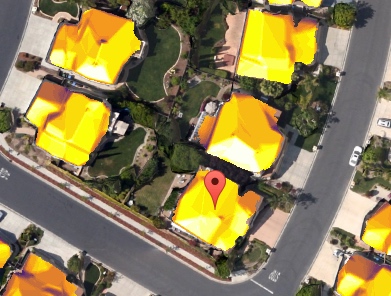Google Confirms: PV Rooftop Solar Is Uneconomic
By Donn Dears -- January 28, 2016“PV rooftop solar is a bad investment, and a bad use of taxpayer money. Google’s Project Sunroof is now helping to confirm this. Money wasted on a bad investment isn’t available for a good investment.”
Google has recently unveiled a project to help homeowners determine whether they should invest in PV rooftop solar to save money. Inadvertently, Project Sunroof is demonstrating that PV rooftop solar is uneconomic.
Project Sunroof is being rolled out across the United States, but is currently only available in a few cities.
The Project Sunroof website uses a few specific examples to demonstrate the viability of PV rooftop solar at those locations.
The book Nothing to Fear provides similar information by state, using a program supplied by an installer. Google’s evaluation’s are probably more accurate because the satellite images of rooftops used by Google can discern shading by trees or other obstacles.
From Google Project Sunroof web site
Project Sunroof calculates the number of years required to recapture an investment in PV rooftop solar using the subsidies available from the government, but omitting those subsidies from the calculations results in long payback periods.
Using the data from the Project Sunroof web site, paybacks, without subsidies, are 13, 17, 12 and 27 years respectively, to recover the initial investment in Redwood, CA, Somerville, MA; San Jose, CA; and Cary, North Carolina.
Sample calculation for Redwood, California:
| Redwood CA | |
| Installed cost, no subsidy | $15,172 |
| Annual electricity bill | $1,200 |
| Percent not provided by PV rooftop solar | 4% |
| Cost of electricity from utility | $48 |
| Savings in electricity costs | $1,152 |
| Divide Installed cost by savings to give payback in years | 13 |
| Data from Project Sunroof web site | |
The payback periods calculated by Project Sunroof are longer than those shown in Nothing to Fear, (Amazon).
The installer program used in Nothing to Fear estimates 8-year and 12-year paybacks for Los Angeles CA, and Massachusetts, and16 year payback for North Carolina, but these estimates don’t include the cost of labor to install the PV rooftop system.
An acceptable financial payback is usually less than 3 years. Any investment that requires more than 3 years is probably not a good investment. Payback periods of 6 years or more are bad investments.
In all 50 states, only PV rooftop installations in Hawaii could be acceptable investments, with payback periods of three years,as calculated using the installer’s program in Nothing to Fear.
Google’s Project Sunroof is now the third method for calculating payback periods to demonstrate that PV rooftop solar installations are uneconomic.
The first method uses 0.75 kWh per square yard of solar panel, as used by the University of California, San Diego, and as shown in Nothing to Fear:
- The second, an installer’s program, also shown in Nothing to Fear:
- And third, Google’s Project Sunroof.
PV rooftop solar is a bad investment, and a bad use of taxpayer money. Google’s Project Sunroof is now helping to confirm this. Money wasted on a bad investment isn’t available for a good investment.
* * * * * *
Nothing to Fear explains that CO2 isn’t to be feared, that politicians are harming Americans by pushing the CO2 agenda, that mankind has benefited from using fossil fuels and can continue to do so, perhaps for 1,000 years.
The appendix itemizes payback periods for PV rooftop solar by state.
Nothing to Fear is available from Amazon and some independent book sellers.
Link to Amazon: http://amzn.to/1miBhXy


When I was an undergraduate in electrical engineer we had a problem in engineering economics. If you powered you house with photo voltaics, how long would it take to recover your investment and start saving money. The answer was that you would never recover the investment. I haven’t seen any study that invalidates that conclusion despite improvements in solar cell efficiency and lower manufacturing costs.